The statue of Zeus in Olympia is a miracle of the ancient world and its history (7 photos)
The Seven Wonders of the World are not just a figure of speech, but truly the brightest and most famous architectural structures of antiquity. 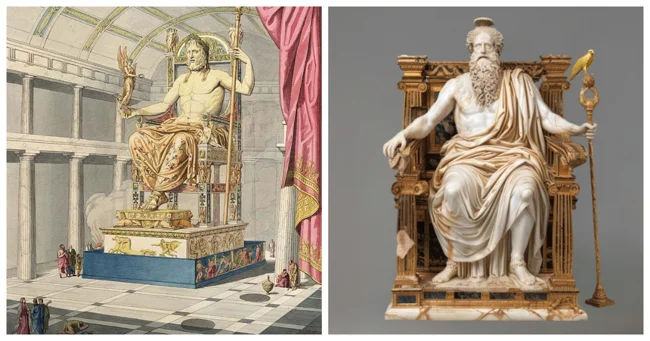
It’s not for nothing that the statue of Zeus occupies a place of honor on this list. 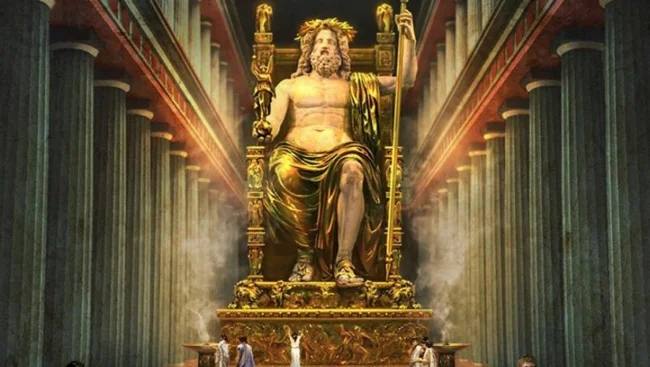
The statue of Zeus at Olympia is a real monumental testament to the greatness of Greek art and religious devotion. Created in the 5th century BC. e. by the famous sculptor Phidias, this colossal figure was not only an artistic miracle, but also a symbol of the power and greatness of Zeus, the ruler of the gods of Olympus. Located in the Temple of Zeus in the heart of Olympia, the statue was the central figure of the ancient Olympic Games and attracted everyone's attention.
Historical background and creation of the statue of Zeus at Olympia 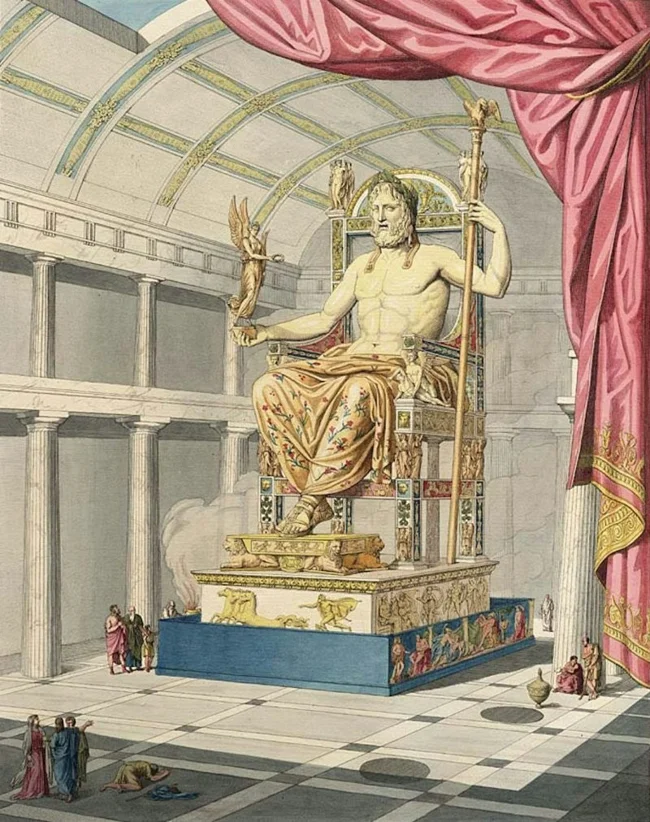
Zeus statue in Olympia
This magnificent statue was not only a religious symbol, but also the pinnacle of Greek artistic expression. The famous sculptor Phidias undertook to breathe life into the deity. To create the divine appearance of Zeus, he chose ivory and gold - materials that reflected the high status of the god, as well as the wealth and power of Olympia. The statue was installed in the Temple of Zeus, a place of pilgrimage for the ancient Greeks, demonstrating the close intertwining of religion, art and society.
Tradition says that when the work was completed, Phidias turned to God with prayer and asked for a sign whether the deity would like his creation. Soon lightning struck the floor, which served as a sign of favor. And since then, a special copper bowl has stood in that place.
The fate of Phidias himself remained unknown. According to one version, he died in prison 3 years later. According to another, he lived for several years in obscurity and poverty.
Evidence of excellence 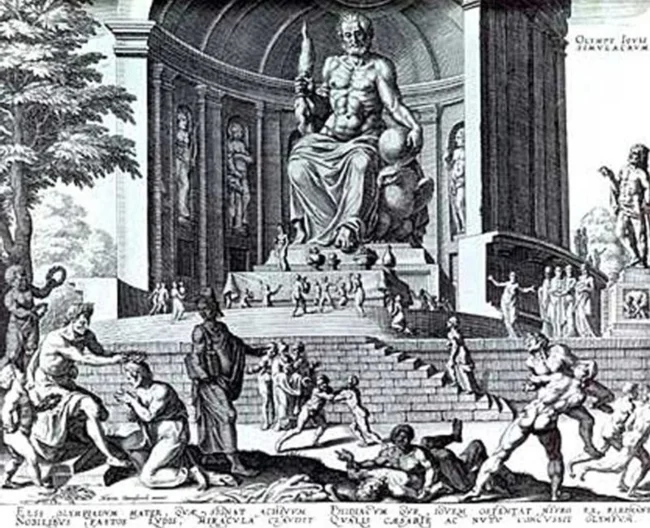
An interesting reconstruction of the statue of Zeus by Phidias in an engraving made by Philippe Galle in 1572
This artistic masterpiece, almost 13 meters high, represented not only the physical manifestation of the king of the gods, but also the cultural aspirations of the Greeks. The creation was a major undertaking, involving the finest artisans and resources from across the region, symbolizing unity.
The statue of Zeus at Olympia became more than just a work of art. It testified to human creativity, religious devotion and the social significance of Olympia as a center of competition.
Design and artwork 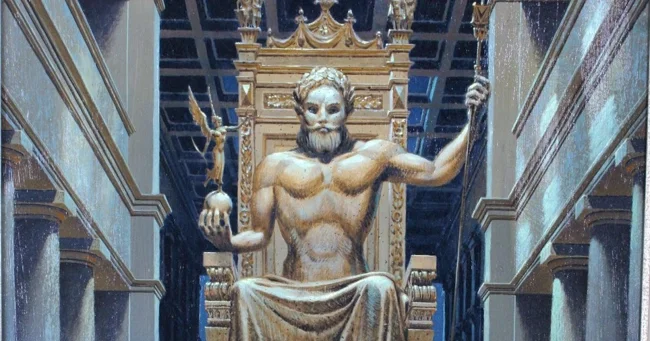
The materials used, including gold and ivory, were chosen for their beauty and durability, demonstrating the advanced technology of the time. The statue depicts Zeus seated on a cedar wood throne, elaborately decorated with gold, ivory, ebony and precious stones, highlighting the luxury and sophistication of classical craftsmanship.
Symbolism in design 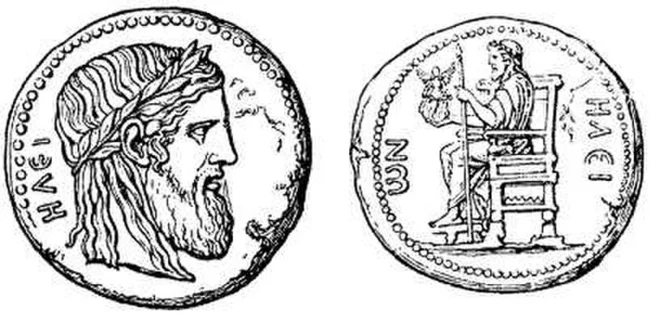
Coin from the Elisa region in southern Greece depicting a statue of Olympian Zeus
Zeus is depicted with a calm but majestic appearance, personifying divine authority and serene strength. His right hand held a small figurine of the goddess of victory Nike, symbolizing success and triumph, and his left hand held a scepter with an eagle on top, representing his power over the world. This elaborate combination of symbolism and artistic skill not only reflected the cultural values of the Greeks, but also inspired reverence and awe.
Disappearance and legacy of the statue of Zeus at Olympia 
A Roman statue of Jupiter, considered the closest to the Greek original. Hermitage, St. Petersburg
The statue of Zeus at Olympia has intrigued historians and archaeologists for centuries, especially due to its mysterious disappearance. However, her fate after the decline of the Olympic sanctuary became the subject of much speculation. Some speculate that the sculpture was transported to Constantinople, where it was eventually destroyed by fire in the 5th century AD. However, the exact evidence remains inconclusive. And the fate of the masterpiece continues to remain controversial.
Despite its loss, the legacy of the statue of Zeus at Olympia has survived through literary descriptions, ancient coins and small copies discovered in archaeological excavations. These echoes have allowed scholars to piece together its greatness and significance, providing insight into ancient Greek culture and religious practices for subsequent generations. And the enduring glory of the statue inspires modern artists to create new masterpieces and continues to captivate the imagination of people around the world.

